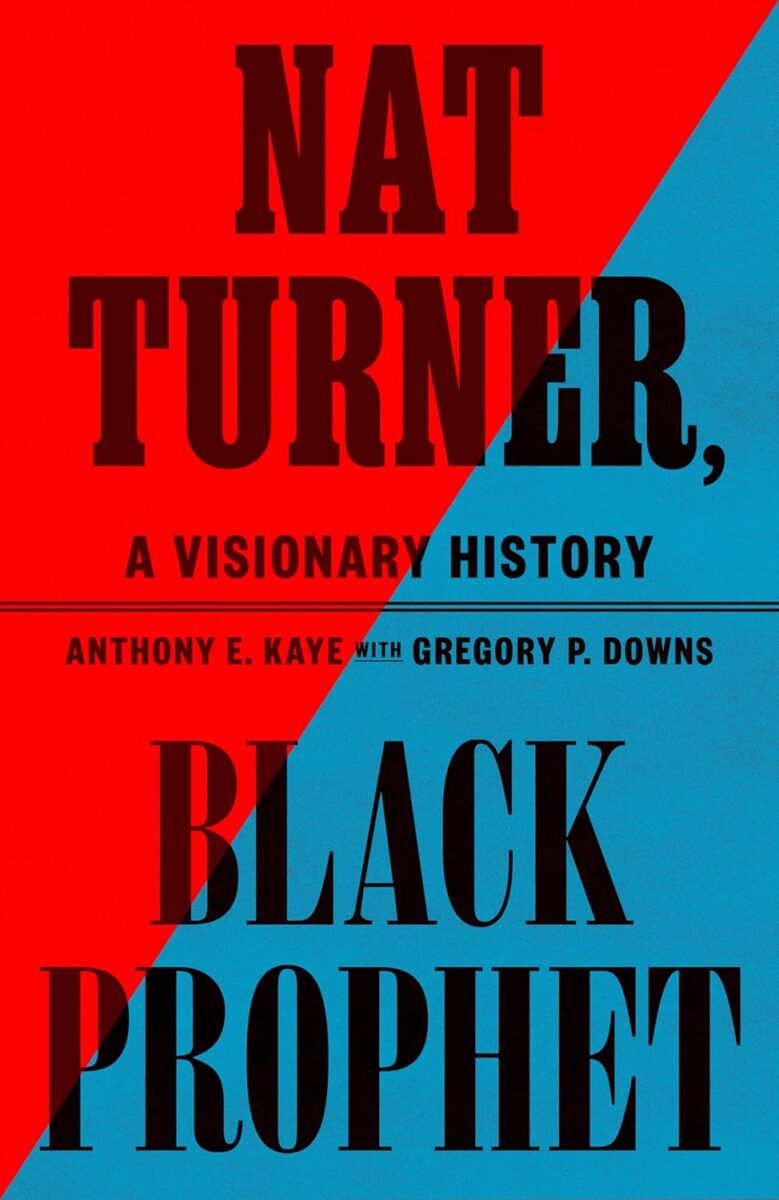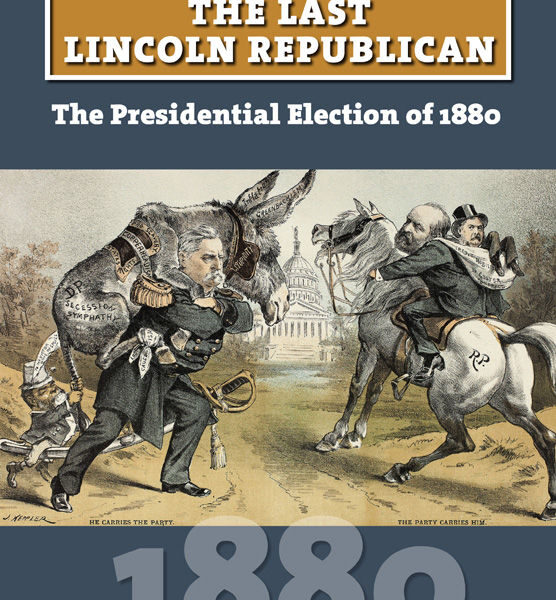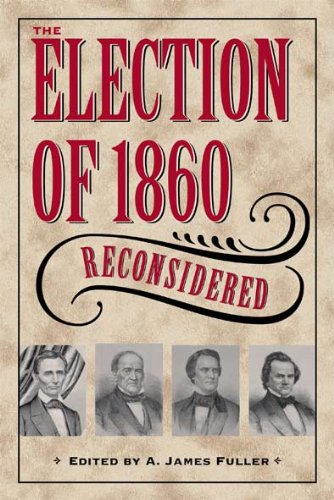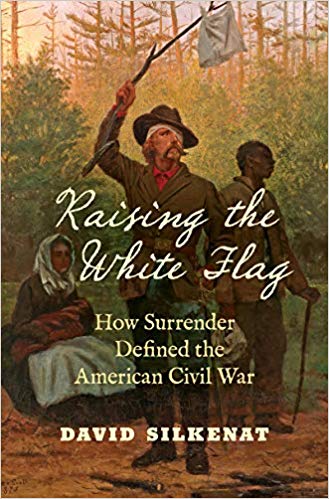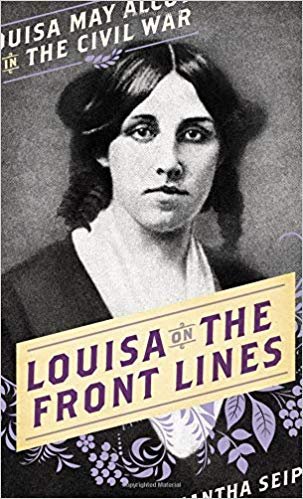“This book is an act of multiple ventiloquisms,” writes Gregory Downs near the end of Nat Turner, Black Prophet (267). The words of the historical figure Nat Turner, so often a point of American fascination, have been filtered through Thomas Gray, the southern lawyer and enslaver who jotted down his confessions while in jail. Anthony Kaye, the scholar of Atlantic slavery, was one of many scholars who set out to tell Nat’s story. When Kaye was diagnosed with cancer and knew his life would not be long, he passed his project along to Downs. The very presence and structure of this book, the result of these divergent voices, embodies the layers, complexities, and collaborative nature of the historical craft.
Though most of the words in this movingly told narrative are Downs’s, the arguments and emphases are Kaye’s, at least as related in an explanatory postscript. (The book follows a common scholarly approach of referring to Nat Turner as “Nat,” rather than his enslaver’s family name, Turner.) Kaye was interested in unpacking the communities in which Nat lived, the military operations he tried to direct, and the broader Atlantic world that both inspired and was inspired by his 1831 Southampton insurrection. While these elements have been touched on by other scholars, few have done so as swiftly and persuasively.
Kaye’s primary motivation was to take Nat’s prophetic claims seriously. In wrestling with the emancipatory general’s words and persistent religious visions, Kaye “began to develop a vision of Nat that unloosed Nat from the narrative of the Age of Revolution, and thus propelled him into a biblical age and time” (264). Nat viewed himself as a prophet first and foremost, an identification that has drawn a variety of reactions: fellow enslaved insurgents viewed him as a modern-day Moses, contemporary enslavers denounced him as a dangerous fraud, and later critics categorized him as a madman. The confidence with which Nat portrayed his revelatory certainty, and the audacity with which he likened himself to biblical prophets, still raises the eyebrows of modern readers.
Many in the scholarly tradition, in hopes of both saving Nat from the lunatic label and relating him to a twenty-first century public, have tried to force him into a secular frame. One way they have done this is by claiming that the religion found in The Confessions of Nat Turner was added by Thomas Gray, in search of an ideological scapegoat. In rejecting this theory, Kaye and Downs offer a critique of the academic literature in general:
It is simpler, and perhaps more reassuring, for essentially secular scholars to treat religion as the means by which people act out their interests or secular ideologies or cultural repertoire, rather than to treat religion as an end in itself. To give religion that kind of motivating power is to admit that the material and linguistic assumptions that still animate much historical scholarship cannot adequately explain human behavior (230).
Until historians attempt to mentally inhabit the world of Nat Turner, in other words, they will fail to capture what animated him and his followers.
Kaye and Downs attempt to capture the religiosity of Turner’s worlds through several means. They talk about cultural precursors like Moses Wilkinson and the southside Methodists, who framed their antislavery rebellion in biblical terms, as well as insurrectionists in Haiti who passed down stories of being led by God. The book is particularly persuasive when discussing Nat’s relationship to Methodism, particularly the faith’s early enthusiastic, and at times violent, visions as expressed through hymns and sermons.
The most powerful and common tool at Kaye and Downs’s disposal, however, is the use of biblical “types.” Nat viewed himself within a biblical tradition, as seen in his confessions to Gray and the stories passed around by his contemporaries. It therefore stands to reason that he also interpreted his life’s events, developments, and choices through those he would have encountered in scriptural texts. Nat Turner, Black Prophet is filled with explanatory asides making speculative, though powerful, assessments of how particular biblical types might have influenced Nat at various moments. These include his initial visions, his early attempts at proselytization, his formation of militia companies, and his suffering at the noose. This mode of analysis is at its best when examining Nat’s struggles with doubts and delay, as well as his choice to murder innocents during the insurrection. Nat urged Thomas Gray to take his messianic framework seriously; Kaye and Downs fulfill that call.
Nat Turner, Black Prophet is only the latest in a line of recent and excellent scholarship on the Southampton revolt. Vanessa Holden’s Surviving Southampton: African American Women and Resistance in Nat Turner’s Community(University of Illinois Press, 2021) creatively captured the world of women and children that surrounded the insurrection. Christopher Tomlins’s In the Matter of Nat Turner: A Speculative History (Princeton University Press, 2020) explored the textual record of the Confessions and placed its transcendent narrative into human time. Though Kaye passed away before he could digest and engage these works, the three volumes combine to flesh out a vibrant picture: Tomlins explains how Nat’s historians should interpret Nat’s mission; Holden dissects how Nat’s community interpreted Nat’s mission; and Kaye and Downs now interrogate how Nat interpreted Nat’s mission.
The saga surrounding the Southampton insurrection, especially the man at its center, continues to inspire readers and provoke scholars. Nat Turner, Black Prophet not only adds to that legacy, but should prompt historians to take more seriously the religious worlds of their subjects, no matter how uncomfortable. The book reminds us that discomfort is an underappreciated yet crucial aspect of our inquiries. Some might even call it sanctifying.
Benjamin E. Park is author or editor of five books. He is currently working on a book about Theodore Parker, religion, and the abolitionist movement.
